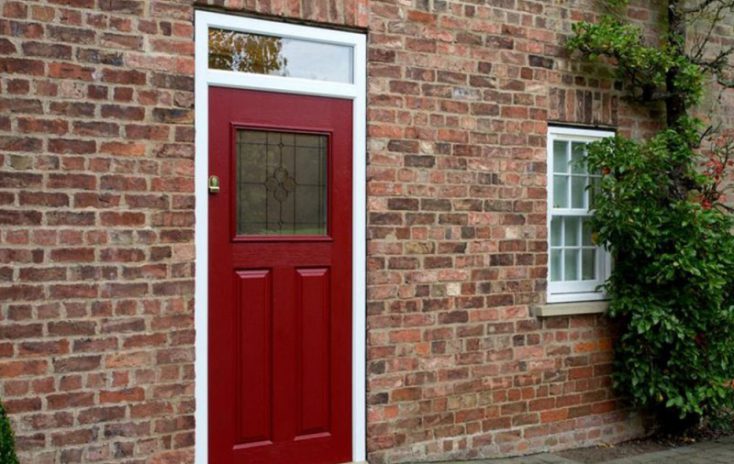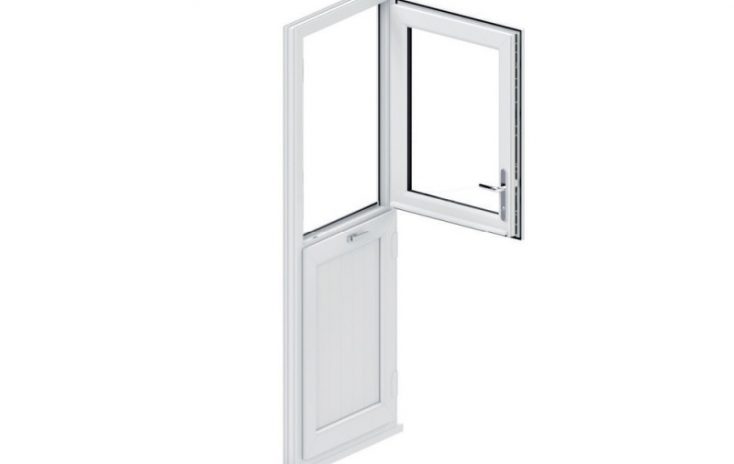Installing a composite door is usually a straightforward task that shouldn’t require too much research or knowledge for our network of installers.
But sometimes it’s good to refresh your memory, as when you’re on the job, it can be quite easy to forget to carry out one of the smaller tasks.
We’ve put together this composite door installation guide to help installers in the middle of a job who need to refresh their memory before finishing a successful installation. It may also be of assistance when looking to adjust a composite door.
Skip to the relevant section for more information:
- Installation
- Sealing the perimeter
- Adjustment
- Maintenance
Installation of the composite door
Positioning of doorsets
When it comes to fitting a door, the placement of the frame within the aperture makes all the difference. The positioning of the new doorset should:
- Bridge the cavity
- Cover the damp proof course
- Minimise exposure to the elements by setting as far back as possible in the aperture
Fixing distances
To determine the fixing spacings, the three sides of the frame should be secured in the following way:
- Minimum of 150mm and a max of 250mm corner fixings distance from the external corner to prevent cracking welds
- Mullion or transom fixings should not be closer than 150mm, or further than 250mm from the centre line of a mullion or transom
- Intermediate fixings should be at centres no greater than 600mm
- Must be a minimum of 3 fixings on each jamb
Using installation packers
To mitigate and prevent distortion to the outer frame during installation, installation packers of an appropriate size should be used, covering the full width of the outer frame profile.
The installation packers should not be able to compress or rot.
Ensure that the fixings are tight, holding the outer frame securely against the installation packers.
Tidying up
Following the completion of the installation, it is important to check that there is no debris or dirt leftover that could impact the operation of the door and its accessories.
Drainage channels should be checked to ensure that there are no obstructions, particularly from materials such as wet plaster.
Ensure that protective film is removed upon completion.
Note: Sand, cement, and plaster, should not be used to fill the gap from the frame to the structural opening.
Sealing the perimeter
In order to prevent water and air leakage, a perimeter sealant should always be applied. It’s important that the sealant should be used to fill the entire gap between the aperture and the doorset.
Low modulus silicone sealant can be used to seal the gap.
Note: It is important to ensure that the sealant does not block any drainage channels. Always check that these are clear.
Adjusting the composite door
Sometimes the composite door may need adjusting, either immediately after installation or over time as movement occurs.
In this section, we’ll take a look at how to adjust a composite door.
Hinge
Vertical adjustment of +4mm (5mm Allen Key)
- Remove the end cap
- To raise the door sash, rotate the vertical adjustment screw clockwise. Ensure that all other hinges are adjusted equally
- To lower door sash, rotate the vertical adjustment screw anti-clockwise. Ensure that all other hinges are adjusted equally
Lateral adjustment +/-2mm (4mm Allen Key)
- Rotate the lateral adjustment drives in the direction needed
Lock-off screw (2mm Allen Key)
- For doors that open outwards, tighten the grub screw to lock the pin into position
Cylinder guard attachment
- Slide the cylinder guard over the cylinder. To hold its position, tighten the internal screw
- With a pencil, mark the position on the outside of the edge of the cylinder
- Remove the internal screw and take the cylinder back out
- Now position the outside cylinder guard against the pencil mark on the cylinder, then tighten grub screws evenly on each side with a 2mm allen key
- Slide the cylinder back through lock and secure the other half of the guard
Ensure that all of the screws are tight to be effective.
Maintenance
After the composite door has been fitted, make sure the customer knows how to look after the door.
Door frame
It is important to clean the door every 4 months both internally and externally. This includes both sides of the door and the glass.
The best way of cleaning a composite door is with a soft cloth and hot, soapy water.
Outer frame seals
To ensure that wear and tear or damage to the outer frame seals hasn’t taken place, it’s important to take a look at them on a yearly basis.
If the seal is found to have shrunk or cracked, or tearing has been found, then the seal should be removed from the groove. A sharp implement, such as a knife, will do the trick.
Door hinges
Hinges should be checked yearly for any dirt or obstruction.
Coloured hinges should be cleaned using a soft cloth with hot, soapy water, rinsed with water and then dried off.
But if the hinges are aluminium or die-cast colour coated, it is important that these are not cleaned. They have self-lubricating nylon bushes, thus do not require any manual cleaning.
Locking mechanisms, handles, and letterplates
To maintain the locking mechanisms, handles, and letterplates, it’s important to clean and remove dirt from moving parts on a yearly basis.
A light machine oil can be used on external moving parts.
For trickier dirt on the handles and letterplates, a mild detergent can be used. This should be rinsed off and dried after cleaning.
Threshold
The threshold should be checked regularly to ensure that there are no obstructions to the drainage holes. If obstructions are found, remove the obstruction and then flush with water to ensure the drainage holes are working adequately.
The weather seals should then be checked annually for any signs of damage, cracking, or shrinkage. If any cracking or shrinkage is discovered, the weather seal should be removed and replaced with a new one.
Ready to install a composite door?
Now it’s time to choose a manufacturer or supplier that suits you. You can find a supplier online.
For more in-depth installation guides, take a look at our Installation and Maintenance downloads page.



